Recent Articles
Popular Makes
Body Types
2019 Chevrolet Malibu vs. 2019 Chevrolet Impala: Which is for you?
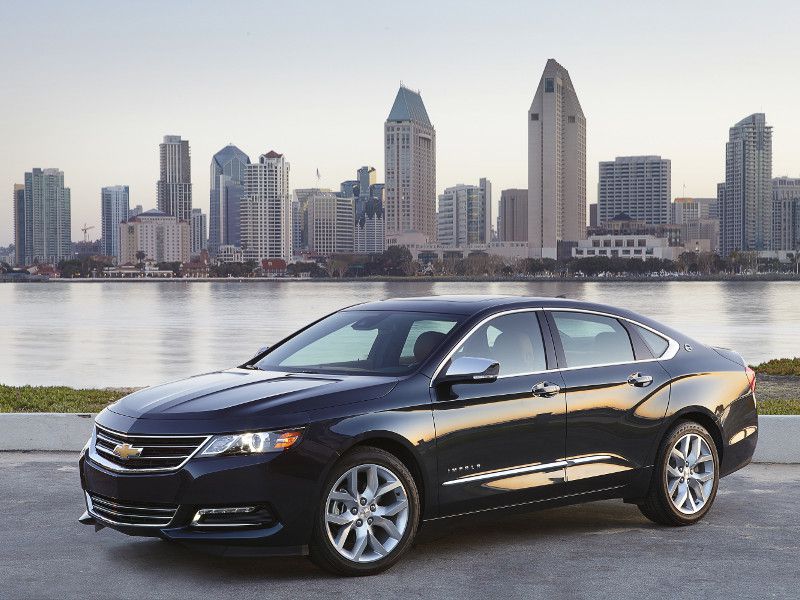
2018 Chevrolet Impala profile ・ Photo by General Motors
If you’re in the market for a new sedan, you might have been wondering whether the mid-size Chevrolet Malibu or the full-size Chevrolet Impala is best for you. Although both these models come from the same manufacturer, there are still significant differences between the two cars aside from the difference in size.
To help you out, the expert editors at Autobytel have compared the Malibu and Impala in nine different categories to see which model comes out ahead where it counts. Read on to learn our conclusions and see which of the two models is right for you.
Pricing
The Malibu starts at $22,965, but for that money you get an entry level L model with only the basic features. Stepping up to the LS will cost you a little more ($1,030) and doesn’t provide many upgrades, but is required if you want to add many desirable options. The RS trim starts at $24,995, the LT at $27,340, and the Premier at $32,545. Hybrid models start at $28,945.
The Impala starts at $28,895, but that gets you an LS trim car with a bit more equipment than the base Malibu. Stepping up to an LT will cost you at least $31,395, while a top-of-the-line Premier model starts at $37,595.
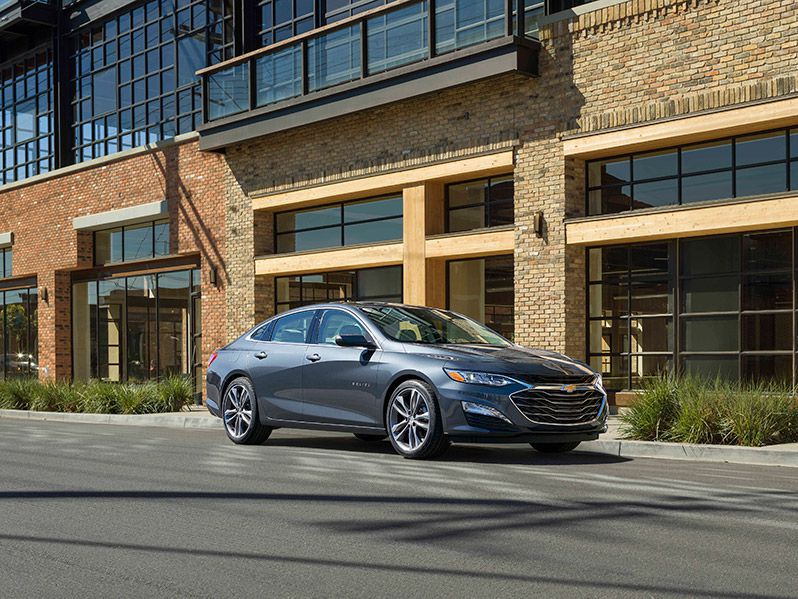
Photo by General Motors
Features
The Malibu’s best features include heated front seats, remote start, a dual-zone automatic climate control system, a Bose premium nine-speaker audio system, a lane-departure warning with lane-keep assist, adaptive cruise control, and rear side-window manual sunshades.
The Impala is also available with remote start, a dual-zone automatic climate control system, adaptive cruise control, and a lane-departure warning (though without lane-keep assist). To those features, it adds an available Bose Centerpoint surround-sound audio system and heated and ventilated front seats. And like other Chevrolets, both the Malibu and Impala come with Chevrolet Connected Access with 10 years of standard connectivity (for vehicle diagnostics and dealer maintenance notifications, but it does not include emergency or security services) and a 4G LTE Wi-Fi hotspot.
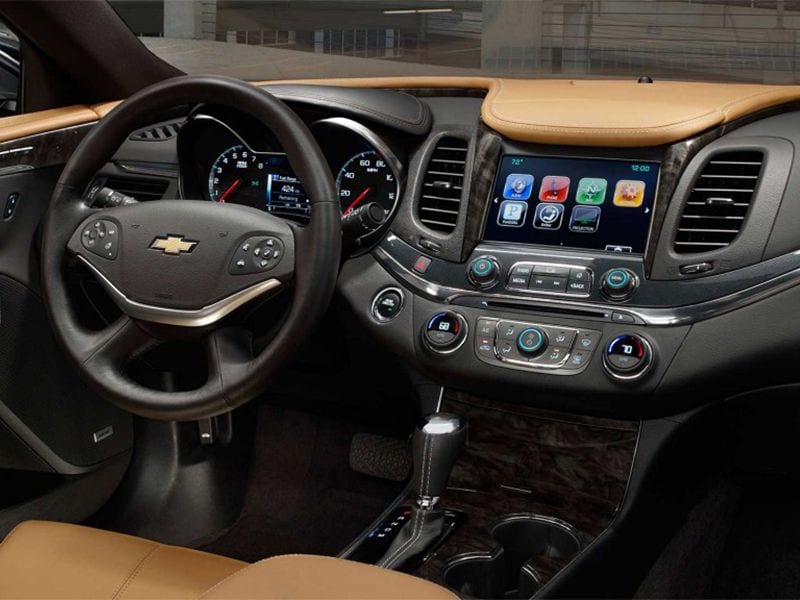
Photo by General Motors
Engines and Transmissions
Although they're both Chevrolets, the Malibu and Impala take different approaches to their powertrains, with the Malibu using turbocharged engines while the Impala uses naturally aspirated powerplants. The Malibu is available with either a 160-horsepower turbocharged 1.5-liter four-cylinder paired with a continuously variable transmission or a 250-horsepower turbo 2.0-liter four backed by a six-speed automatic. A hybrid Malibu is also available, with a maximum of 182 combined maximum system horsepower (and a 1.8-liter engine, which is the only non-turbo engine in the lineup).
The Impala is available with either a 197-horsepower naturally aspirated 2.5-liter four-cylinder or a 305-horsepower 3.6-liter V6, both of which are paired with a six-speed automatic transmission.
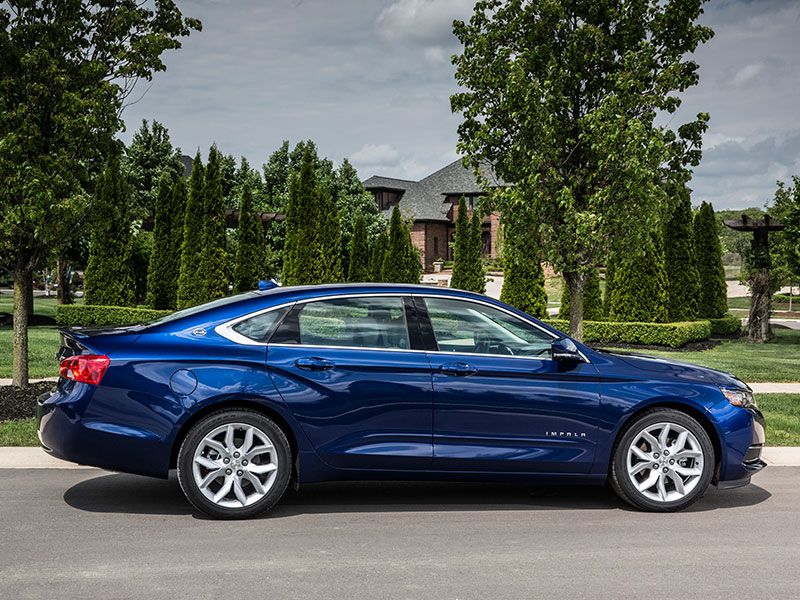
Photo by General Motors
Performance and Fuel Economy
Thanks to its small-displacement four-cylinder turbocharged engines, the Chevrolet Malibu is significantly more efficient than the Impala, with combined fuel economy ratings of 32 miles per gallon for the 1.5-liter and 26 mpg for the 2.0-liter, while the hybrid is rated at 46 mpg combined. Even with the most powerful turbo 2.0-liter engine, the Malibu takes just over 8 seconds to get up to 60 miles per hour.
The Impala, on the other hand, can only eke out a 25 mpg rating with the 2.5-liter four-cylinder and a 22 mpg combined rating with the 3.6-liter V6, but Impalas with the V6 can hit 60 mph in just over 6 seconds.
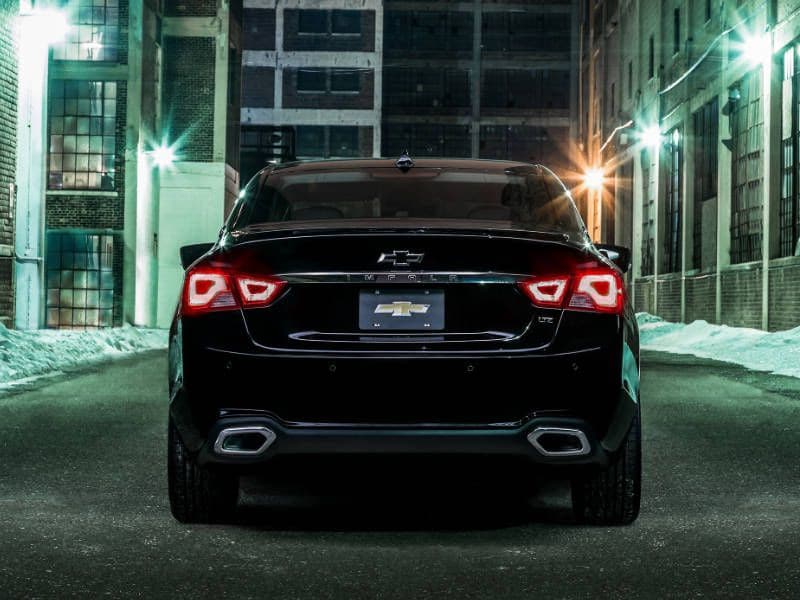
Photo by General Motors
Ride and Handling
The Impala handles well for a car a full-size car with such a good ride, but it can’t quite match the smaller Malibu, which feels quite a bit more nimble through the corners. The Malibu also has impressive steering feel and better handling than most of the other cars in the mid-size segment.
The Impala doesn’t have nearly as much steering feel, but it rides a bit better than the Malibu, and when behind the wheel it doesn’t feel much bigger than its smaller sibling. That's likely because even though the Impala is an extra 7.1 inches longer and a few hundred pounds heavier, the Malibu and Impala are the same width and have similar wheelbases.
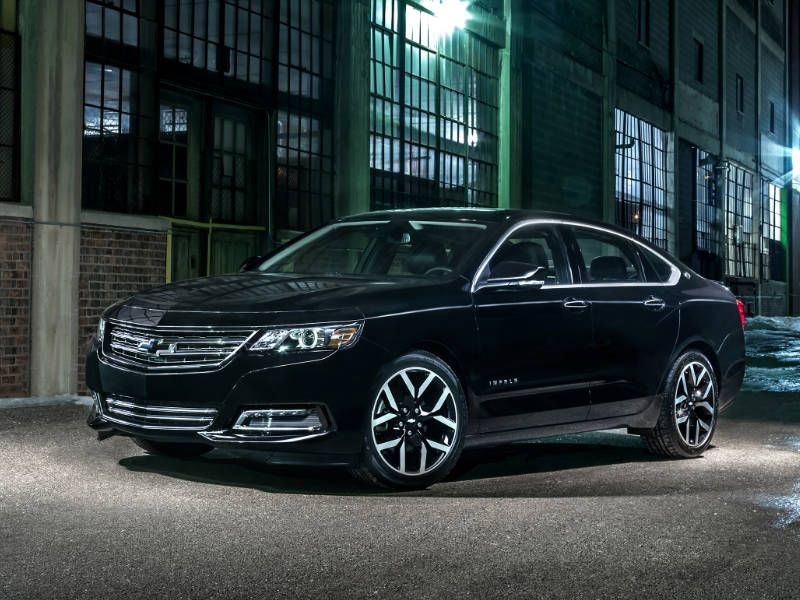
Photo by General Motors
Exterior
Both the Malibu and the Impala use variations on Chevrolet’s current corporate design language. And both are almost instantly recognizable as GM products thanks to their sleek flowing lines and the big Chevy badge on their fronts, though the Malibu has a slightly more modern and aggressive look.
The Impala, on the other hand, has a hard time hiding its dimensions and has a slight hint of the classic full-size cars of yore in its design (though that isn’t necessarily a bad thing). Both are good looking cars, but we especially like how the Malibu's better proportions and shorter overhangs give it an overall sportier look.

Photo by General Motors
Interior
The Impala is a bigger car than the Malibu, and it shows on the inside. The Impala has more front headroom and significantly more front legroom — both of which are near the top of the full-size class. That being said, the Malibu should still be spacious enough for just about all drivers.
In the rear, both the Malibu and Impala offer similar headroom, but the Impala has almost two extra inches of legroom. Despite the extra space for noise to resonate, the Impala’s interior is also quieter than the Malibu’s, and it’s generally a nice place to be thanks to all the room. However, the Malibu has more modern interior design and slightly nicer materials.
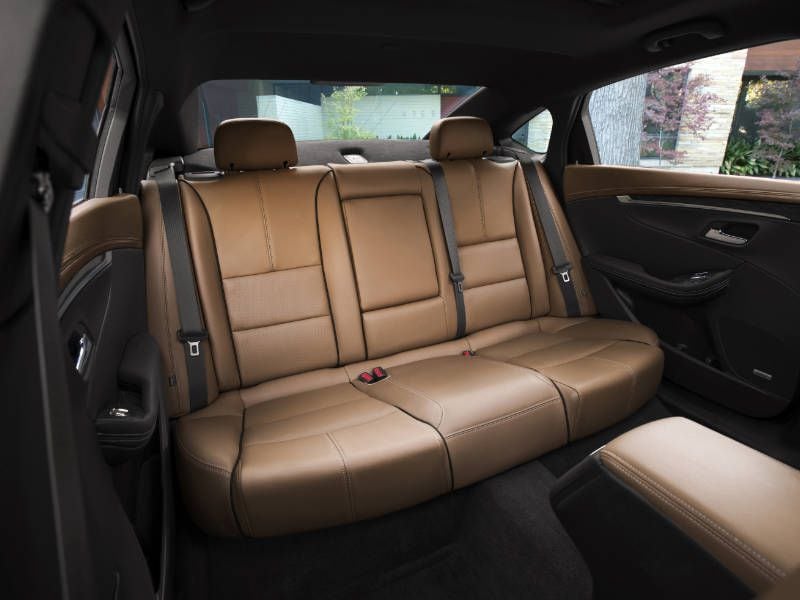
Photo by General Motors
Safety
The Insurance Institute for Highways Safety awarded the 2018 Malibu its top score of Good in all of its crash tests except the front-passenger small-overlap frontal test, where it scored Marginal. Its optional front-crash prevention technology was judged Superior, while its headlights were Poor.
The 2018 Impala earned Good in all tests other than the front driver-side small overlap test, where it scored Acceptable (it hasn’t been tested in the passenger side version of the same crash). Its optional front-crash prevention is also Superior, but it's missing the lane-keeping assist offered in the Malibu and its headlights are also Poor. The IIHS hasn't rated the 2019 models, though they'll likely be similar. The Impala and Malibu earned identical National Highway Traffic Safety Administration ratings of five stars in front and side crash tests and four stars for rollover resistance.
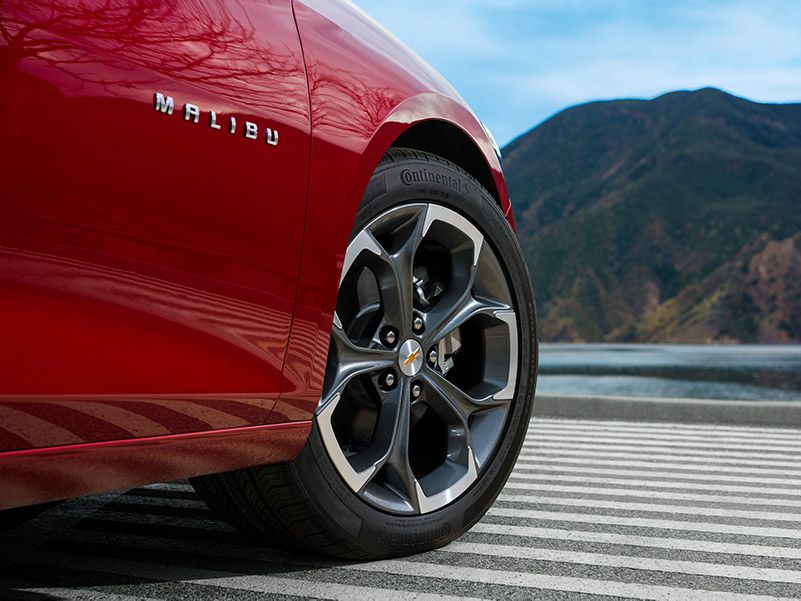
Photo by General Motors
Cargo and Capability
The Impala has 18.8 cubic feet of trunk space compared to the smaller Malibu’s 15.7 cubic feet (or only 11.6 cubic feet in the hybrid, thanks to the extra space taken up by the system’s batteries). Maximum towing capacity for both models is a rather low 1,000 lbs, but according to GM’s 2018 Trailering Guide, the Malibu can be flat towed behind (behind an RV for example) while the Impala can’t.
Unfortunately, neither Chevrolet sedan is offered with any type of all-wheel drive system. You’d have to step up to a Buick or Cadillac to get a GM passenger car that’s available with all-wheel drive.
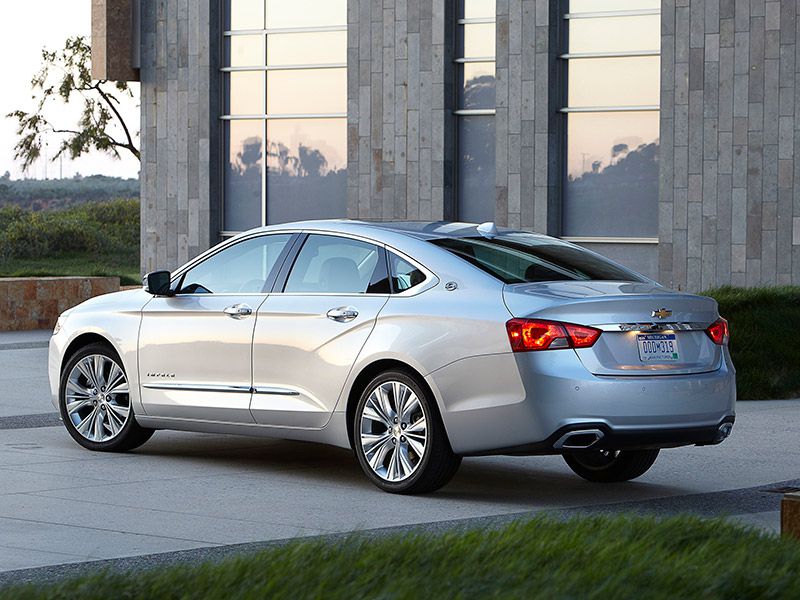
Photo by General Motors
Final Verdict
This was a very close matchup, with both the Impala and the Malibu each showing advantages in important areas. It's also worth noting that neither model has any real weaknesses.
So what it comes down to is that if you’re looking for a car with a powerful engine, lots of features, and a large interior, then the Impala is the way to go. The Malibu, however, is perfect for those looking for a more fuel-efficient vehicle that’s just a little bit safer, a bit sportier-looking, and a bit more affordable. If you’re still up in the air, don’t just take our word for it — take both models for a test drive to see which you like best.
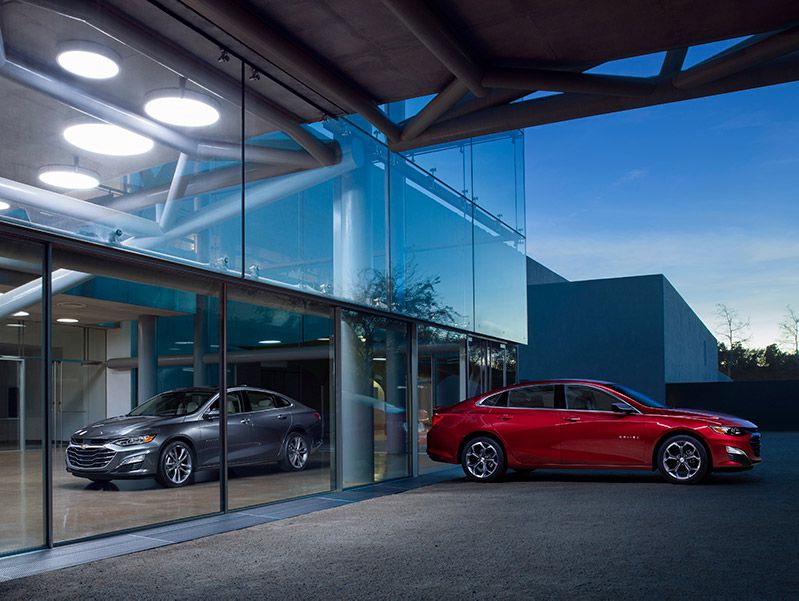
Photo by General Motors